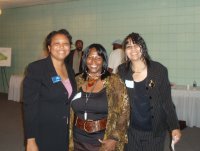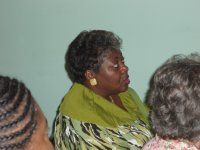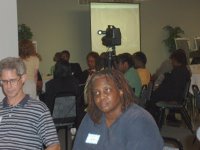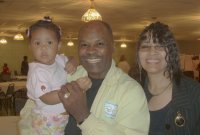Rhoden writes about a history that I lived through and learned using my eyes and my ears, not books. Questions that were not asked but still were answered through naïve observation. Rhoden tells the stories and tales of the sport world that are down right ugly, but warriors stood in the mess and challenged, with a simply, watch me work. The hardship old school endured to make a way for the young cats today.
Rhoden demands more from the young cats arrival on the scene as big ballas. He encourages them to learn African-American athletes’ struggle in paving the way for them to be able to demand huge salary. To simply pour out a little wine, for the brothas, who were not paid their weight and gold, but endured the slights, for a better environment for those who would follow. Rhoden called old school, “activists” and young cats,” symbolic markers of progress.” If the conveyor belts continues to deliver these types of young cats, those “absence of vision and leadership to help define the next stage in the struggle, which is, according to Rhoden, “the historical mission of black athletes to push for progress and power” will be lost.
Rhoden, suggest that these young cats are not only well paid and talented but they have what old school was missing to create power back in the day. That is juice, investment capital, that these young cats can own something, These young cats, don’t have to go back to the impoverished neighborhoods themselves, but they can create jobs for those who will never have the opportunity to earn the kind of money they command.
Rhoden gives an example, in five young cats that decided to ban together rather than go their separate ways. Chris Webber, Juwan Howard, Jalen Rose, Jimmy King and Ray Jackson, All-Americans high school seniors, as package collectively chose Michigan to continue their basketball career. This teamwork model can be replicated for real power, The rainmakers can ban together to make a difference in the lives of folks who will never accumulate the wealth, but will not have to wait on donations, if only businesses by these wealthy cat would built in these communities.
The conveyor belt process writes, Rhoden, as described by Rudy Washington, “‘How tough is it to buy an inner-city kid? Buy him some shoes, take him to dinner, get him some nice clothes, maybe a car. You become his best friend, and he gets hooked, like a junkie..” They you control the product. The secret is controlling the product early. It’s just like slavery. Modern-day slavery is what it is. And you know the saddest part? The kids benefit from the system—at least a few lucky ones—with education and money, but what they often lose is any identification with the black community.’’’
Those athletes like Michael Jordan, who believes that these owners are their friends, or that all African-Americans can assimilate, Rhoden warns that the Naturalization Act of 1790 was for European immigrants to become free white persons. And Abe Pollin of the Washington Wizard fired Jordan, the universal man, after turning a losing franchise into a winning franchise. Jordan was told not only would he never own the franchise but also he was not even wanted as a franchise partner.
It makes sense as to why so many African-Americans males use and allow the use of N---er in their presence when in the company of raced whites after reading the 40 Millions Dollar Slaves. The male bonding with raced white males in sport, in order to show good sportsmanship, cultivates a permissible environment for the usage.
This book should be read by young players' coaches and the parents who push their children into playing sports as a way out of poverty.
The Jockey Syndrome:
The jockey syndrome ejected African-Americans athletes from the game of competitive sports, by banning them all together at the whim of fans or owners.
"..the white power structure chose blacks who made whites feel comfortable."
Later, when African-Americans were dominating sports, coaches refused to recruit African-Americans players:
"The manager said that it was not the 'conduct of the Negroes [that]was objectionable, but their mere presence.'"
"..the White South's revulsion at the presence of blacks, but on the other, they couldn't suppress their admiration of---and Need for---the black physical presence."
"..mental scourge of segregation."
"..the basis for integration---in the minds of many white people---was not to embrace quality, but to seize an opportunity for exploitation."
By now there was a need for teams to recruit African-Americans or risk having a losing team competing against winning teams that were recruiting them.
"By the beginning of the 2006 Major League Baseball season, four of thirty big league managers were African Americans. There were no African American owners."
However, I was intrigued by terms used by Rhoden, the author, in describing the strategy for eliminating African-Americans from the world of sports.


 Ask yourself the two questions asked of the stakeholders' focus group. What are some of the positive reasons for developing and/or investing in the southeast and what does the City need to do to promote development/investment in Southeast? Answers these two simply questions may make you do something about the weeds growing on East Creighton Street and embracing a $6 million dollar low-income project ready to go on the Southside. But I’m not Mr. Davis, I see ghosts of the same old tired dreams deferred for those living on the southside.
Ask yourself the two questions asked of the stakeholders' focus group. What are some of the positive reasons for developing and/or investing in the southeast and what does the City need to do to promote development/investment in Southeast? Answers these two simply questions may make you do something about the weeds growing on East Creighton Street and embracing a $6 million dollar low-income project ready to go on the Southside. But I’m not Mr. Davis, I see ghosts of the same old tired dreams deferred for those living on the southside.






















